What is a Curly Hair Tarantula?
The Curly Hair Tarantula (Tliltocatl albopilosus), is a popular species of tarantula known for its docile temperament and distinctive appearance. Native to the tropical regions of Central America, particularly Costa Rica, these spiders are favored by both novice and experienced arachnid enthusiasts. Their relatively gentle nature and manageable size make them a great option for those looking to keep a tarantula. Understanding their needs is the first step in becoming a successful keeper and providing a comfortable environment for this fascinating creature. This guide will provide everything you need to know to properly care for your Curly Hair Tarantula, from setting up their habitat to understanding their behavior and health needs.
Appearance and Characteristics
Curly Hair Tarantulas are aptly named for the abundance of curly, golden-brown hairs that cover their bodies, giving them a charming and unique look. These hairs, technically called setae, provide sensory information and serve a defensive function. They can flick these hairs off their abdomen as a defense mechanism, which can cause irritation to potential predators (or careless handlers). Adult females can grow up to 6 inches in leg span, while males tend to be slightly smaller. They have a robust build, with a dark brown or black carapace (the top shell of their cephalothorax) and legs. Their gentle demeanor and attractive appearance have made them a favorite among tarantula keepers.
Origin and Habitat

These tarantulas originate from the humid rainforests of Central America, especially Costa Rica. In their natural habitat, they are terrestrial spiders, meaning they live on the ground, often burrowing or finding shelter under logs, rocks, or leaf litter. Understanding their natural environment is key to replicating it in captivity. They thrive in warm, humid conditions, so it’s important to mimic this environment in their enclosure to keep them healthy and happy. They are well-adapted to the tropical climate of their native regions, so it is important to provide the same conditions in a captive environment to ensure their well-being. Their natural environment provides crucial information for replicating ideal living conditions.
Setting Up Your Curly Hair Tarantula’s Habitat
Creating the perfect habitat for your Curly Hair Tarantula is crucial for its health and well-being. The enclosure should provide a secure, comfortable, and stimulating environment that mimics their natural habitat. The right setup helps regulate temperature and humidity while also providing the spider with a sense of security. A well-designed habitat minimizes stress and promotes healthy behaviors, ultimately contributing to a longer, happier life for your tarantula. Remember to always prioritize your tarantula’s needs when setting up its home.
The Right Enclosure
For an adult Curly Hair Tarantula, a terrarium that is at least 10 gallons (e.g., a 10x10x12 inch enclosure) is recommended. The enclosure should be well-ventilated with a secure lid to prevent escapes. The enclosure size should allow for the spider to move around and establish a comfortable burrow or resting place. Avoid enclosures that are too large for juveniles, as this can make them feel insecure. Glass or clear plastic enclosures are ideal because they offer excellent visibility. Make sure the enclosure is escape-proof, with a lid that either locks or is secured with clips. Also, it is important to provide adequate ventilation to prevent the buildup of humidity.
Substrate and Decoration
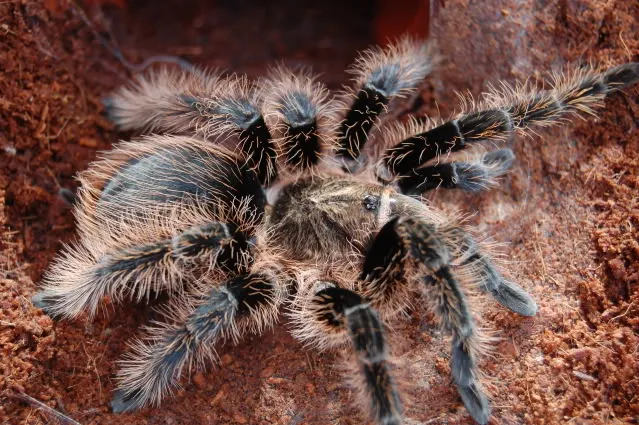
The substrate is the bedding material that covers the bottom of the enclosure and should be approximately 2-4 inches deep. Suitable substrate choices include a mix of coconut fiber (coir), peat moss, or a commercially available tarantula substrate mix. These materials retain moisture well and allow the tarantula to burrow. Decorations such as cork bark, artificial plants, and hides provide the tarantula with places to hide and feel secure. Arrange the decorations to provide a variety of textures and hiding spots. Ensure that any decorations are stable and won’t crush the tarantula. The substrate should be kept clean and replaced regularly to maintain hygiene and prevent the growth of mold or mites.
Temperature and Humidity
Curly Hair Tarantulas thrive in a temperature range of 75-85°F (24-29°C). You can maintain this temperature using a heat lamp or a heat mat placed on the side of the enclosure (never on the bottom). Always monitor the temperature with a thermometer to ensure it stays within the appropriate range. Humidity levels should be kept between 65-75%. To maintain humidity, mist the enclosure lightly with water once or twice a week, depending on the ventilation and substrate. Avoid oversaturating the substrate, as this can lead to mold and other problems. Use a hygrometer to measure the humidity levels. Regular monitoring of temperature and humidity is essential for maintaining a healthy environment for your tarantula.
Feeding Your Curly Hair Tarantula
Providing the correct diet and feeding schedule is essential for your Curly Hair Tarantula’s health and growth. Tarantulas are opportunistic feeders, meaning they will eat what is available. It is important to provide a varied diet to meet their nutritional needs. Overfeeding can be just as harmful as underfeeding, so it is crucial to establish a healthy feeding routine that promotes a healthy weight and growth. You must observe your tarantula’s feeding habits and adjust the diet and schedule accordingly.
What to Feed
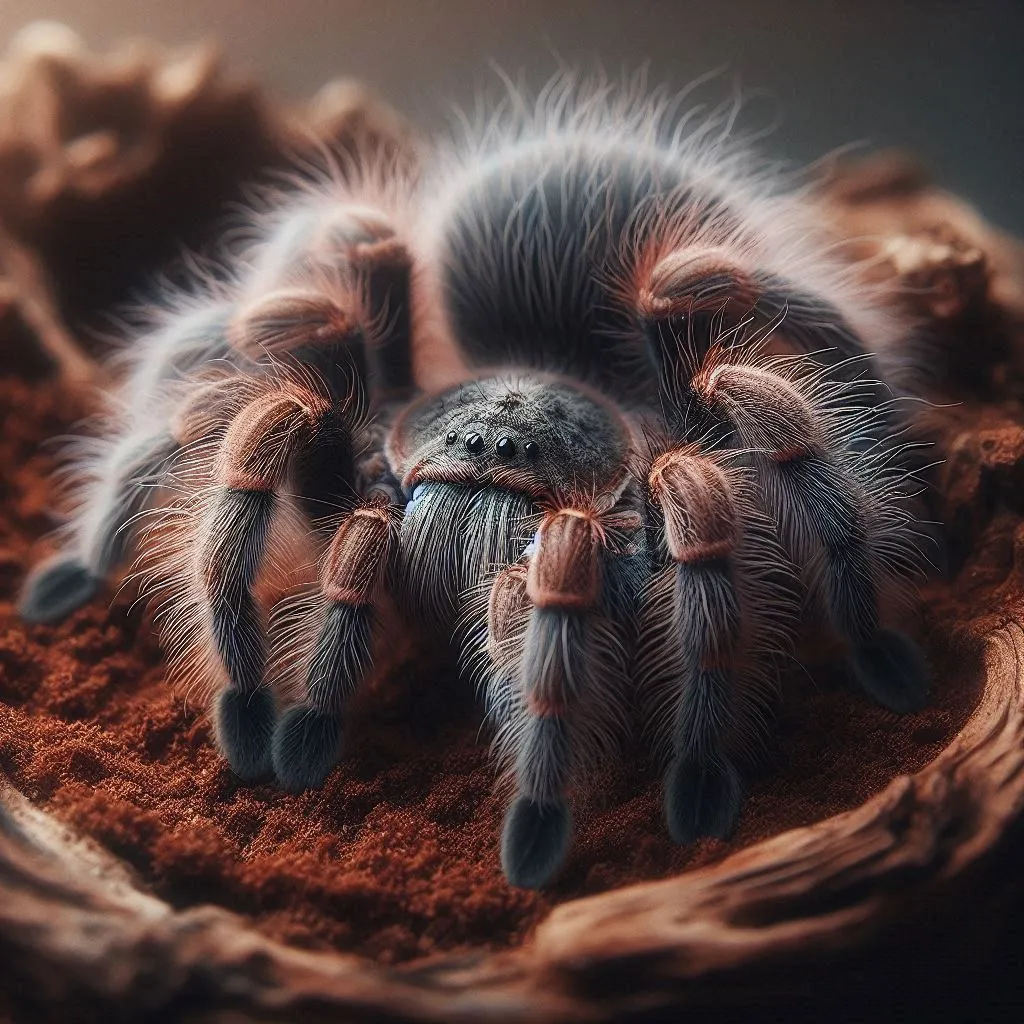
The primary diet of a Curly Hair Tarantula consists of insects. Crickets, mealworms, and roaches are excellent choices. You can also supplement their diet with occasional treats like pre-killed pinkie mice for adults, but these should be given sparingly. The size of the prey should be appropriate for the size of your tarantula. As a general rule, the prey should be no larger than the tarantula’s body. It is crucial to gut-load the feeder insects (feeding them nutritious food before offering them to your tarantula) to ensure they are providing optimal nutrients. Always remove any uneaten food within 24 hours to prevent mold growth.
Feeding Schedule
The feeding schedule for Curly Hair Tarantulas varies depending on their age. Spiderlings (juveniles) should be fed 2-3 times a week, while adults can be fed once every 1-2 weeks. Observe your tarantula’s abdomen; if it is plump and rounded, it is well-fed. If the abdomen appears shrunken, it may need more food. Always provide fresh, clean water in a shallow dish. Make sure to adjust the feeding schedule based on your tarantula’s individual needs and growth stage. Also, avoid feeding your tarantula when it is in premolt (preparing to molt) or immediately after molting, as they will be vulnerable.
Water and Hydration
Fresh, clean water is crucial for your tarantula’s survival. Always provide a shallow water dish in the enclosure. The water dish should be small enough to prevent the tarantula from drowning and should be easily accessible. Regularly check and refill the water dish to ensure the water is always clean. You can also mist the enclosure lightly to maintain humidity and provide additional hydration. Avoid using tap water, as it may contain chlorine or other chemicals harmful to tarantulas. Use bottled water or dechlorinated water to prevent any potential health issues and provide a safe drinking environment.
Handling and Safety Precautions
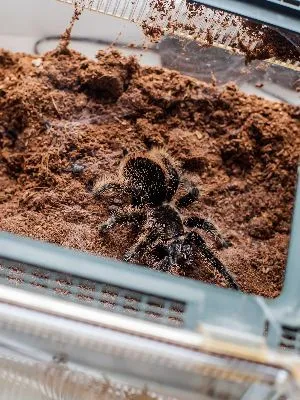
While Curly Hair Tarantulas are generally docile, it’s important to handle them with care and respect their boundaries. Tarantulas can be easily stressed or injured, and their bites can be painful. Understanding their behavior and following safety precautions will help keep both you and your tarantula safe during handling and interaction. Approaching the handling of a tarantula requires knowledge and a gentle approach. This section will outline the best practices for interacting with your tarantula, ensuring a safe and enjoyable experience.
Understanding Tarantula Behavior
Tarantulas are not social creatures and prefer to be left alone. They are generally more active at night (nocturnal). Before attempting to handle your tarantula, observe its behavior. Signs of stress include a defensive posture (raising its front legs), flicking urticating hairs, or fleeing. Never force your tarantula to be handled if it is showing signs of stress. Always approach your tarantula slowly and calmly, and avoid sudden movements or loud noises. Understanding their basic behaviors can assist you in recognizing when they are receptive to handling and to know the best way to ensure a safe interaction.
Safe Handling Techniques
If you choose to handle your Curly Hair Tarantula, do so with extreme care. Handling should be kept to a minimum to reduce stress on the spider. Always handle your tarantula over a soft surface, such as a bed or carpet, in case it falls. Gently coax the tarantula onto your hand. Avoid grabbing or squeezing the tarantula. Always wash your hands thoroughly before and after handling your tarantula. It is best to let the tarantula walk onto your hand rather than trying to pick it up. Be patient and calm and let the tarantula move at its own pace. Some tarantulas are more comfortable being handled than others, so respect your spider’s personality.
Common Health Issues and Solutions
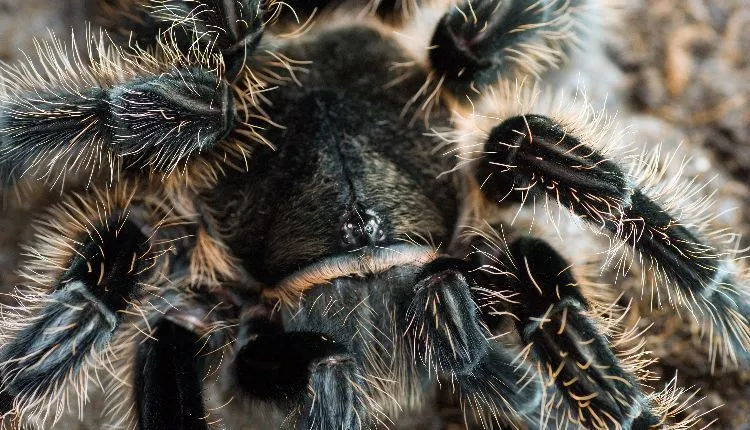
Curly Hair Tarantulas, like all pets, can encounter health problems. Being aware of potential issues and knowing how to address them is crucial for their longevity and well-being. Regular observation, proper care, and quick action can help prevent and treat these health problems, ensuring your tarantula lives a long, healthy life. This section will cover the common health problems and their solutions.
Molting Process
Molting is the process by which a tarantula sheds its exoskeleton to grow. This is a natural and essential part of their life cycle. Before molting, your tarantula may stop eating, become lethargic, and may appear darker in color. They will often flip onto their backs during the molting process. Do not disturb your tarantula during this vulnerable time. After molting, the tarantula will be very soft and vulnerable, so avoid handling or feeding it for at least a week to allow its new exoskeleton to harden. The frequency of molting decreases as the tarantula ages. A healthy molt is a sign of a healthy tarantula. Make sure the enclosure environment is stable.
Parasites and Diseases
While Curly Hair Tarantulas are generally hardy, they can be susceptible to parasites and diseases. Mites are a common problem in tarantula enclosures, often appearing as tiny, moving specks. You can remove mites by improving ventilation and cleaning the enclosure regularly. Other diseases are rare in tarantulas, but fungal infections can occur if the humidity is too high and the substrate is not kept clean. If you notice any signs of illness, such as lethargy, loss of appetite, or unusual behavior, consult a veterinarian experienced in exotic pets. Keeping the enclosure clean and maintaining proper humidity and temperature levels are the best preventative measures.
Breeding Curly Hair Tarantulas
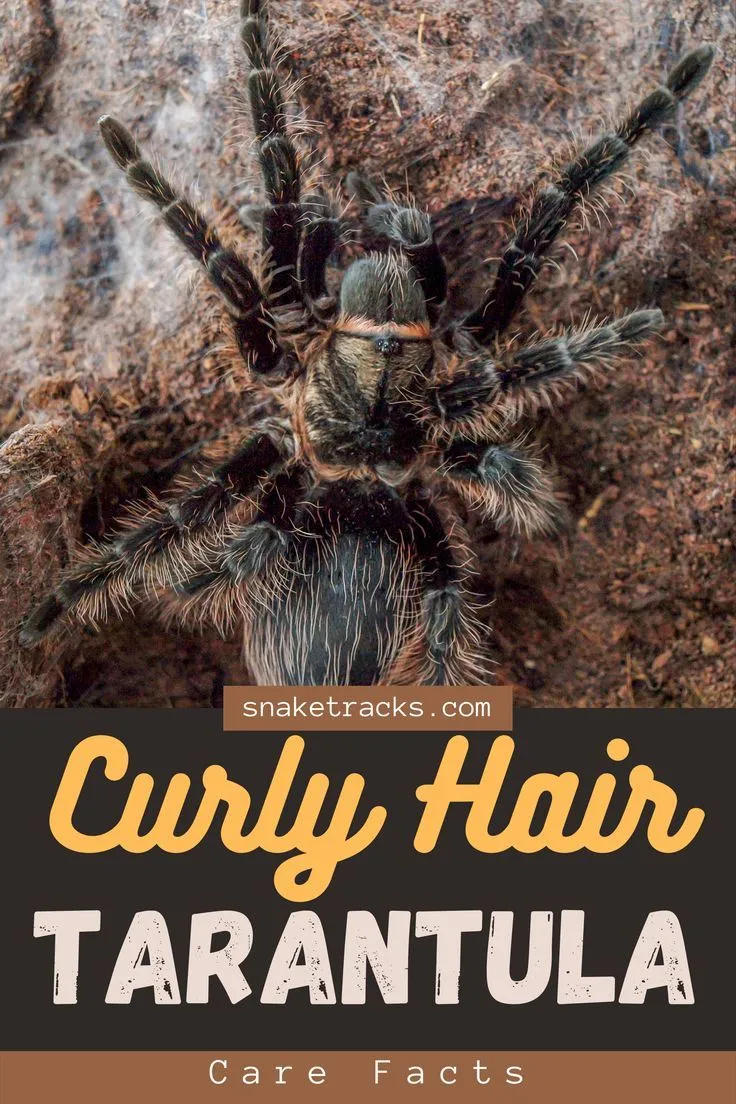
Breeding Curly Hair Tarantulas can be a rewarding experience, but it requires experience and careful planning. This process is not for the faint of heart and should only be attempted by experienced tarantula keepers. Successfully breeding tarantulas requires a solid understanding of their mating behaviors, proper environmental conditions, and the ability to provide for the offspring. This section will provide an overview of the breeding process.
Sexing Your Tarantula
Before attempting to breed Curly Hair Tarantulas, you must determine the sex of your tarantulas. The easiest way to determine the sex is to examine the molt. After a molt, you can check for the presence of spermathecae (sperm storage organs) in the female and a pair of modified pedipalps (mating hooks) in the male. These features are typically only visible on the molted exoskeleton. If you are unsure, consulting with an experienced tarantula keeper can help you to accurately identify the sex of your tarantulas.
Mating and Egg Sacs
Mating involves introducing the male into the female’s enclosure. Be prepared to separate them immediately after mating to prevent the female from eating the male. The female will lay eggs a few weeks to months after mating. The eggs are encased in an egg sac, which the female will guard. You can either leave the egg sac with the female or remove it and incubate it artificially. The spiderlings will emerge from the egg sac after a few weeks. They are fragile and require specialized care to survive. Breeding tarantulas is a complex process, and it requires patience, expertise, and a commitment to the well-being of both the adult tarantulas and the spiderlings.
Conclusion
Caring for a Curly Hair Tarantula can be an incredibly rewarding experience. With the proper knowledge and care, you can enjoy the unique beauty and fascinating behaviors of these creatures. Remember that proper habitat setup, feeding, and handling are essential for their health and well-being. By following the guidelines in this guide, you can provide a safe and comfortable environment for your tarantula, ensuring it lives a long and healthy life. Always be patient, observant, and willing to learn as you care for your Curly Hair Tarantula. Enjoy the fascinating world of tarantula keeping!
